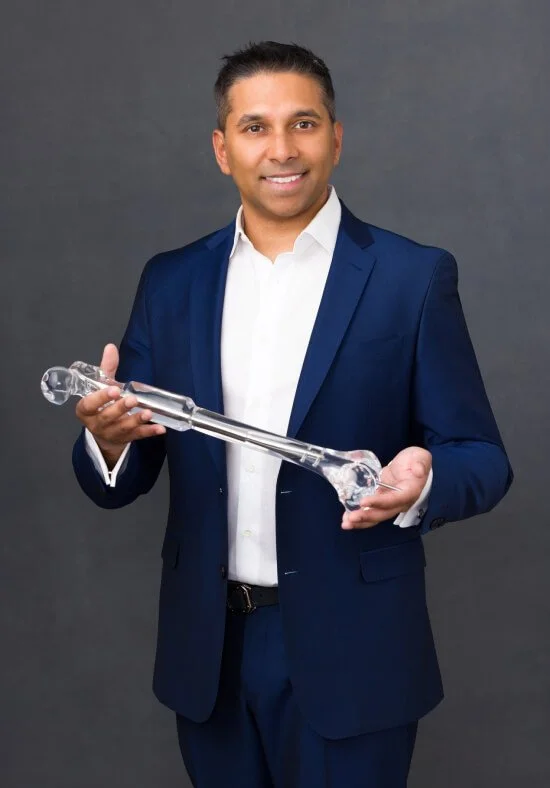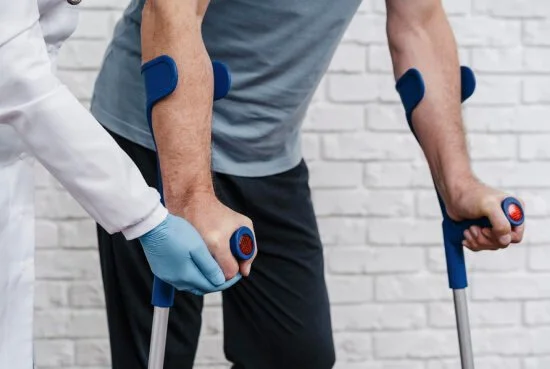LEG LENGTHENING SURGERY: PROCEDURE, PROCESS AND RECOVERY OF LIMB LENGTHENING
Welcome to a world where you can rewrite the rules of stature, a realm where you have the power to reshape your destiny. At LimbPlastX, we specialize in a revolutionary treatment that offers an answer to those who aspire to stand taller, aim higher, and live bigger. A state-of-the-art solution designed around your needs, it promises safety, efficacy, and a higher quality of life. Ready to elevate your potential? We invite you to explore more on our website, rediscover yourself, and step into a future where you are your own architect.
Limb-lengthening surgery, is an operation that aims to increase the length of an individual's legs. This operation is commonly recommended for individuals who suffer from leg-length discrepancies, congenital defects, or injuries that affect the growth and development of their legs.
WHAT IS LEG LENGTHENING?
Leg-lengthening surgery is a surgical procedure aimed at correcting legs of unequal lengths or increasing the length of short limbs. This treatment involves a process known as osteotomy, where the orthopedic doctor cuts the bone to be lengthened. The operation can be used to treat conditions such as skeletal dysplasia and bone growth abnormalities. It is often employed in cases of congenital deformities, injuries, diseases, or for cosmetic reasons in adults who wish to increase their height.
The leg lengthening method is gradual, allowing the bones and soft tissues, including skin and muscles, to adapt to the changes. It involves cutting the bone in a way that enables its slow lengthening. In some procedures, an internal device known as an intramedullary nail is used. This expandable, magnetically controlled rod is inserted through the bone to facilitate the process. The main goal is to level out the body or fix differences in the lengths of the limbs.
LIMBPLASTX COMPREHENSIVE FEMORAL LIMB LENGTHENING SURGERY OVERVIEW
CONSULT PHASE
Embark on the initial steps of your journey through a comprehensive video consultation—an invaluable platform to explore the intricacies of the femoral lengthening procedure. This phase allows us to assess your candidacy thoroughly and address any concerns you may have. It's the opportune moment to delve into potential risks and complications that may arise during and after operation. If you decide to proceed, we can initiate pre-operative optimization, incorporating stretching routines, nutritional supplements, medical clearance, and smoking cessation. Following this, an in-person consultation ensues, involving X-ray evaluation, a detailed physical examination, and a comprehensive clinical assessment. During this visit, we will review the risks and benefits, outline the program, and set realistic expectations. Additionally, we will discuss post-operative medications to ensure you are well-informed and prepared for the journey ahead.
OPERATION DAY
Bilateral cases last around 1.5 hours, followed by an additional hour in recovery before heading to the dedicated recovery suite. The operation itself incorporates meticulous steps to mitigate risks like infection, blood transfusion, fat embolism, and DVT—events that are extremely rare in our extensive experience.
LIMBPLASTX MEDICAL APPROACH
Experience the innovation of our minimally invasive surgical technique, designed to achieve remarkable results with precision and care. For femur lengthening, the operation involves one 1-inch incision and three-four ½ inch incisions, ensuring a meticulous approach with minimal impact.
IMPLANTATION WITH PRECICE TECHNOLOGY
The heart of the procedure lies in the placement of either the PRECICE 2.2 or Max implant nails into the intramedullary canal—the hollow inner part of the bone. This strategic implantation sets the stage for controlled and accurate bone lengthening.
REMOTE-CONTROLLED LENGTHENING
Post-surgery, the implanted device seamlessly integrates with a remote control, allowing for gradual and controlled lengthening. This advanced method is generally painless, providing a patient-friendly experience throughout the journey.
Early mobilization, often within 4 hours post-surgery, is encouraged with the aid of a walker.
INPATIENT POST-OPERATIVE COURSE
Following the treatment, a patient undergo a comprehensive two-day admission in the hospital, ensuring continuous monitoring by our skilled nursing staff. This dedicated period allows for attentive care and immediate response to any post-operative needs. In the inpatient phase, our dedicated physical therapists concentrate on mobilization, transfers, and adapting to light movement with a walking aid. Pain control is effectively managed through IV or oral medications as needed. Medications to optimize bone healing are administered, and various precautions are taken during operation to further mitigate risks. Our specialized physical therapist, well-versed in the intricacies of limb lengthening procedures, makes daily visits. This personalized attention ensures optimal recovery and progress tailored to individual needs.
POST-DISCHARGE PHASE
Following discharge, patients stay in Las Vegas for a minimum of two weeks until their first post-operative clinic follow-up. During this time, oral pain medications are continued, and daily physical therapy sessions play a crucial role in enhancing mobility and walking tolerance. Blood thinners, usually Xarelto, are continued until the end of the lengthening phase, typically commencing around five days post-surgery. Lengthening is overseen using an external remote control (ERC) as instructed by the LimbplastX team.
Regular X-rays every two weeks guide the lengthening progression, ensure implant integrity, monitor bone formation, and detect any signs of change. During this period, patients engage in physical therapy sessions five to six days a week, each lasting a minimum of one hour. If sufficient physical therapy facilities are available in their local area and they can commit to mandatory follow-up visits, patients may leave the Las Vegas vicinity approximately two weeks after surgery.
LENGTHENING PHASE
Daily physical therapy for an hour, along with an additional hour of personal stretching, is crucial during the lengthening phase. Maintaining full knee extension and a minimum of 90 degrees of knee flexion is imperative. Any unusual symptoms such as swelling, neurological issues, or skin discolorations should be promptly reported to the office.
CONSOLIDATION PHASE
Upon achieving the desired length, the consolidation phase commences. Adhering to weight-bearing restrictions and continuing physical therapy to regain range of motion are paramount during this phase, lasting as long as the lengthening phase. X-rays at 4-6 week intervals assess bone healing and implant changes. During this phase, the emphasis on bone supplements and proper nutrition remains crucial for facilitating effective bone consolidation. Patients are encouraged to explore additional options to expedite this process through discussions with the LimbplastX team. These discussions may involve considerations for bone stimulators and other relevant medical treatments. It's important to note that blood thinners are usually discontinued during this phase, following the guidance of Dr. Debiparshad. This aspect of the treatment plan is carefully managed to align with the overall recovery approach.
Once full consolidation is observed, a patient can resume full activities.
POST-CONSOLIDATION
After completing the consolidation phase, a patient continue to progress, engaging in higher-level activities, including sports.
WHAT DOES LIMB-LENGTHENING SURGERY LOOK LIKE?
THE LIMB-LENGTHENING SURGERY USUALLY TAKES PLACE IN FOUR STAGES
-
During the surgery stage, the orthopedic doctor makes an incision in the affected leg to access the bones that need lengthening. The doctor may use bone grafts or osteotomies (cutting of the bone) to create a gap between the two ends of the bone.
Internal Device:
Internal devices, such as an intramedullary (IM) rod or a lengthening rod, are then inserted into the bone to provide stability and support during the process.
External Fixator:
An external fixator, a lengthening device that attaches to the bone for support, is then attached to the skin and the bone using pins or wires. The external fixator is designed to hold the bone in place while it is lengthened.
-
The latency period is the time between the surgery and the start of the distraction phase. During this period, the bone slowly heals, and new bone formations begin.
-
During this phase, the external fixator is gradually adjusted to increase the distance between the two ends of the bone. This method creates a gap that encourages the growth of new bone tissue within the bone.
-
The final stage is called the consolidation phase where the bone consolidates, fuses, and fully heals. During this phase, the external fixation device is removed, and the patient undergoes rehabilitation to restore strength, mobility, and function to their leg.
In conclusion, limb lengthening is a complex procedure that can help individuals overcome limb length discrepancies and other related medical conditions. It is important to carefully weigh the pitfalls and benefits of limb lengthening and to consult with a qualified orthopedic surgeon before deciding to undergo the surgery.
HOW MUCH TALLER WILL PATIENTS BECOME AFTER LENGTHENING?
The amount of elevation gain varies depending on the patient's initial stature, body type, and the lengthening technique used. However, on average, a patient can expect to gain between 2 to 6 inches in elevation. It is important to note that while the surgery can increase elevation, it cannot change the patient's proportions or change the length of the torso.
WHO IS A GOOD CANDIDATE?
The ideal candidate for cosmetic height surgery is someone who is healthy, mentally and physically stable, and has realistic expectations for the outcomes of the operation. While anyone can undergo the surgery, it is mostly sought after by individuals who have a stature complex, individuals with congenital leg length discrepancies, or people who have undergone trauma and had their leg bones shortened.
WHAT ARE THE RISKS?
Like any other surgical operation, limb lengthening carries some risks. Some of the risks associated with this surgery include the following:
Infection at the site of surgery
Nerve damage or paralysis
Bone fractures or deformity
Stiffness or weakness in the limbs
Delayed or nonunion of bones
It is essential to discuss the potential risks of the surgery with their doctors before undergoing the limb lengthening.
PATIENT RECOVERY TIME: HEALING PROCESS OF MUSCLES, NERVES, AND TISSUES
The recovery time for this procedure varies depending on the extent of the surgery, the individual's healing rate, and the response of the nerves in the affected area. Generally, patients will need to spend a few days in the hospital after the surgery and will be on crutches for several weeks afterward. As their nerves adjust to the changes, patients are advised to avoid weight-bearing activities for at least three months after surgery. Rehabilitation can take up to a year. During this recovery period, patients must follow a strict regimen that includes physical therapy, regular check-ups, and prescribed medication to ensure proper nerve healing and function.
In conclusion, limb lengthening is a complex procedure in the field of orthopedic medicine that can result in a considerable stature gain for individuals who are unhappy with their stature or suffer from leg discrepancies. However, before deciding to undergo limb lengthening, patients must consider the risks and the lengthy recovery process involved. It is always best to consult with an experienced surgeon who can guide patients through the benefits and risks of the surgery to make an informed decision.
HOW LONG DOES IT TAKE?
The length of time it takes to lengthen a limb through surgery depends on the amount of growth desired and the rate of the lengthening process. Generally, a limb can be extended by 1 millimeter per day or 1 inch per month. However, this rate may vary depending on the individual's bone density, age, and overall health. Consequently, lengthening a limb by a few inches may take several months to complete.
HOW MUCH CAN A BONE BE LENGTHENED?
The amount that a bone can be elongated depends on various factors, including the location of the bone, the age of the individual, and the extent of the length discrepancy. For instance, the femur bone, which is the largest bone in the thigh, can be lengthened by up to 6 inches, whereas the tibia or shin bone may only be able to be lengthened up to 3 inches. Generally, younger individuals can achieve greater lengthening than older individuals, as their bones are still growing and have more potential for elongation.
It is worth noting that leg-lengthening procedure is a highly specialized and complex procedure that should only be performed by experienced doctors who specialize in the field. Furthermore, the recovery process may be extensive, often requiring physical therapy and rehabilitation to enable the individual to regain optimal function of the limb. For those who want a longer limb, limb lengthening can be a good choice.
WHAT IS THE DIFFERENCE BETWEEN LEG AND ARM LENGTHENING?
Firstly, the segments involved in limb lengthening are much larger, as the femur and tibia are longer than the humerus and forearm. This means that the limb lengthening process is generally more involved and time-consuming than arm-lengthening.
Additionally, there is often a difference in the care required for post-operative healing between the two procedures. For example, children undergoing limb lengthening may need to temporarily use a wheelchair or crutches during recovery, while a child undergoing arm lengthening may still be able to use their arms for basic tasks.
One major difference between leg and arm lengthening is the method of internal lengthening used. For limb lengthening, an intramedullary rod is often used, which is inserted into the bone and gradually extended using specialized equipment. For arm lengthening, an external fixator may be used, which involves attaching metal rods to the bone on the outside of the body and gradually adjusting them over time.
Overall, limb lengthening is a complex process that involves careful planning and monitoring by a trained medical team. While there are differences between limb lengthening and upper limb lengthening in terms of the specific steps, both require a commitment to rehabilitation and post-operative care in order to ensure optimal outcomes for the patient.
IS WORTH IT?
Because of biological and ethical considerations, cosmetic lengthening is likely to have a minimum age. However, no maximum period is expected because some surgeons will perform the operation on patients over the age of 50.
WHAT IS THE MAX AGE?
Because of biological and ethical considerations, cosmetic lengthening is likely to have a minimum age. However, no maximum period is expected because some surgeons will perform the operation on patients over the age of 50.
CAN YOU WALK NORMAL AFTER THE OPERATION?
The recovery time will vary depending on how much you want to lengthen the bone and if you are lengthening multiple structures.
After surgery, most people can walk without crutches in two to three months. When the bone gets to the length you want, recovery usually goes faster.
LIMB LENGTH PROCEDURE:
INSIGHTS FROM RENOWNED SURGEONS
Renowned for their expertise and innovative techniques in limb lengthening procedures, surgeons at the LimbplastX Institute are changing lives with their minimally invasive treatments. Led by Dr. Kevin Debiparshad, MD, a Harvard-trained surgeon, the institute is renowned globally for its advanced techniques in cosmetic limb lengthening. The operation offers patients the opportunity to increase their stature by up to six inches in just a few months.
The institute uses a cutting-edge system for internal limb lengthening, making it a market leader in stature lengthening and limb reconstruction. This innovative, minimally invasive technique has already helped numerous patients realize their ideal stature. Dr. Debiparshad is the second surgeon in the world to utilize this advanced method.
The LimbplastX Institute, a leading provider of limb lengthening surgeries, is dedicated to providing world-class assistance from the initial consultation through to stature realization. They have revolutionized the path to regaining self-confidence, with patient testimonials attesting to the life-changing results of these procedures. Dr. Debiparshad has made significant contributions to the cosmetic limb lengthening conversation within the medical industry and popular culture, earning him a reputation as one of the world's most successful limb lengthening surgeons.
In addition to cosmetic procedures, the institute also provides orthopaedic services, including minimally-invasive advanced spine surgeries. Regardless of age or background, patients can expect unwavering commitment to innovation and world-class care at the LimbplastX Institute.
CONCLUSION:
In conclusion, limb lengthening surgery is not only a medical intervention but also a life-transforming process. This method encourages the body to regenerate new bone, nerve, and tissue to increase the length of the limbs. It requires a dedicated team of medical professionals, state-of-the-art techniques, and a highly specialized post-operative care plan. The LimbplastX Institute, under Dr. Kevin Debiparshad's leadership, has emerged as an international leader in this field, delivering unrivaled care and innovative treatments. Whether your aim is to enhance your stature or overcome the challenges of limb discrepancies, the LimbplastX Institute is ready to help you embark on this potentially life-changing journey. Don't hesitate to contact the LimbplastX Institute today and take the first step towards realizing your full potential.











